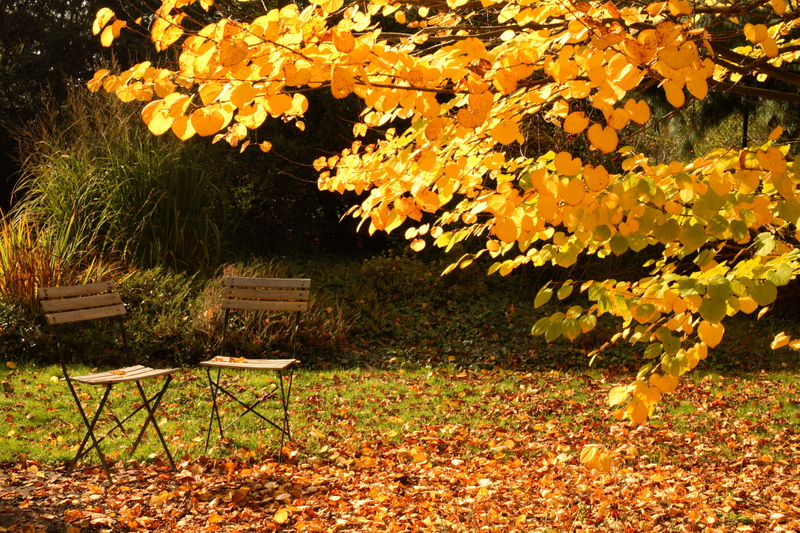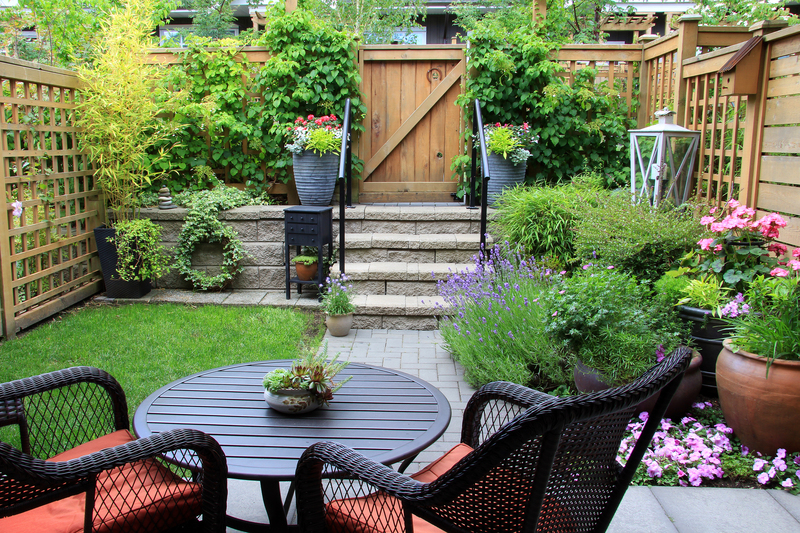Eco-Friendly Wind Defense: Sustainable Practices for Gardens
Posted on 12/09/2025
Eco-Friendly Wind Defense: Sustainable Practices for Gardens
In an era where sustainability is at the forefront of gardening trends, the ability to protect your green spaces from wind without harming the environment is paramount. Wind defense in gardens isn't just about sheltering delicate plants--it's about integrating eco-friendly and sustainable practices that harmonize with nature. In this comprehensive guide, you'll discover how to implement sustainable windbreak solutions tailored for gardens of all sizes, while ensuring environmental stewardship and garden vitality.

Why Wind Defense is Crucial for Gardens
Wind can be a silent foe for gardeners. From toppling flowers and crops to robbing soil of its moisture, persistent winds can drastically affect a garden's health. Learning to defend your garden from harsh winds sustainably not only protects your plants but also enriches the ecosystem surrounding your home.
The Damage Wind Inflicts on Gardens
- Increased evaporation: Winds accelerate evaporation, drying out both soil and plant tissues.
- Mechanical stress: Persistent wind can bend stalks, break branches, or uproot young seedlings.
- Desiccation: Leaves lose water quickly, leading to browning and stunted growth.
- Pest and disease spread: Windblown pathogens and pests can quickly infect a garden.
Implementing wind prevention strategies that are both environmentally friendly and effective gives your garden the resilience it needs. But what are the most effective sustainable wind defense practices for gardens?
Sustainable Wind Defense Techniques for Gardens
Let's delve into a range of sustainable, eco-friendly windbreak solutions--from natural plant barriers to innovative garden designs.
1. Living Windbreaks: Trees and Shrubs
The gold standard for natural wind defense in gardens is the strategic use of hedges, trees, and shrubs. A living windbreak not only breaks the wind's force but also enhances biodiversity and beauty.
- Select native species: Choosing locally adapted trees and shrubs ensures minimal water use and optimal resilience.
- Layered planting: Plant tall trees at the back, medium shrubs in the middle, and low-growing bushes at the front. This graduated design slows winds more effectively than a single line of trees.
- Diversity is key: Mixed windbreaks attract beneficial wildlife and offer resistance to pests and diseases.
- Edible options: Incorporate fruit trees and berry bushes for multi-purpose wind barriers--food and protection in one.
2. Creating a Permeable Windbreak
The best sustainable wind defense methods do not block wind entirely. Instead, a windbreak should filter and slow down the wind, reducing its harmful effects while minimizing turbulence.
- Aim for 50-60% density: A solid wall causes wind to funnel over or around it, creating damaging eddies. A semi-permeable barrier diffuses wind energy and protects a larger area.
- Prune for permeability: Allow some gaps between branches in your hedges and shrubs.
3. Using Trellises, Fences, and Screens
When space or climate prevents you from using trees, artfully designed structures can serve as effective, sustainable wind defense for gardens.
- Bamboo screens: Fast-growing and renewable, bamboo makes lightweight yet strong windbreaks.
- Living fences: Combine trellises with climbing plants like peas, beans, or flowering vines to create green, porous screens.
- Reclaimed wood panels: Upcycling old wood into slatted garden fences offers eco-friendly wind moderation.
4. Strategic Garden Design and Layout
Garden layout is a crucial aspect of eco-friendly wind protection. Smart design choices work with nature, not against it.
- Windward protection: Identify the direction of prevailing winds and place windbreaks accordingly.
- Zones and microclimates: Use taller plants or structures to protect sensitive crops, creating microclimates that foster growth.
- Staggering and overlapping: Layer barriers rather than creating one long fence; it increases wind resistance and protects more space.
5. Mulching for Soil Protection
Wind isn't just a danger above ground--it can erode soil and uproot small plants. Applying mulch is a key sustainable practice for defending gardens against wind.
- Organic mulches: Use shredded leaves, wood chips, or straw to lock in moisture and shield soil from wind exposure.
- Living mulches: Low-growing ground covers can be both beautiful and functional, protecting bare soil while suppressing weeds.
Advantages of Sustainable Wind Defense in Gardens
Integrating eco-friendly wind protection practices isn't just beneficial for your plants--it also boosts your entire gardening ecosystem. Here's how:
- Enhanced biodiversity: Living windbreaks supply food and shelter for birds, insects, and other wildlife.
- Reduced resource use: Well-designed wind defenses mean less water and fertilizer wasted to evaporation and runoff.
- Natural beauty: Mixed, green windbreaks blend seamlessly into the landscape, unlike harsh artificial barriers.
- Improved productivity: Plants subjected to less wind stress grow stronger, healthier, and more productive.
- Climate adaptation: Sustainable wind defense helps gardens withstand the increasing frequency of storms and extreme weather.
Step-by-Step Guide: Implementing Eco-Friendly Wind Defense
Step 1: Assess Your Garden's Needs
- Observe wind patterns--when and from where do the strongest winds blow?
- Identify areas of the garden most vulnerable to wind damage--these spots should be prioritized for windbreak installation.
Step 2: Choose Appropriate Windbreaks
- For larger spaces, select a mix of native trees and shrubs. If space is limited, opt for fast-growing bamboo or install climbing plant screens on trellises.
- For kitchen gardens, consider edible hedges or aromatic herbs which double as windbreaks and culinary resources.
Step 3: Design for Sustainability
- Plan for windbreaks to be semi-permeable, avoiding solid, impervious barriers.
- Use organic mulches and ground covers to stabilize soil and prevent erosion.
- Plant in layers and clusters for maximum wind resistance.
Step 4: Implement and Maintain
- Plant windbreak species at the correct spacing and time of year (typically autumn or spring).
- Water and mulch windbreaks thoroughly during establishment.
- Prune regularly to maintain density and permeability.
Choosing the Best Plants for Living Windbreaks
Picking the right specimens is essential for a truly sustainable, long-lived windbreak. Here are some *eco-friendly plant options* ideal for different climates:
- Temperate Climates: Hawthorn, blackthorn, privet, holly, hazel, elderberry.
- Dry/Sandy Soils: Sea buckthorn, tamarisk, rugosa rose.
- Wet Areas: Willow, alder, red osier dogwood.
- For Edible Windbreaks: Apple, pear, currant, gooseberry, saskatoon, serviceberry.
Tip: Always choose plants that suit your local conditions and require little extra water or chemical input.
Innovative Sustainable Wind Defense Ideas
- Pollinator-friendly hedges: Add flowering species like lavender, butterfly bush, or wild roses to attract bees and butterflies.
- Perennial vegetable windbreaks: Asparagus, Jerusalem artichoke, and rhubarb can double as edible barriers.
- Green walls: Vertical gardens filled with drought-tolerant plants create living walls that break wind and maximize limited garden space.
- Natural fences: Copses of fast-growing natives like dogwood or elder can form a lush, renewable fence line.

Common Mistakes to Avoid in Eco-Friendly Wind Defense
- Choosing invasive species: Some popular windbreak plants can become problematic. Always research before planting.
- Overcrowding: Planting hedges too close can restrict air flow and foster disease.
- Neglecting maintenance: Even eco-friendly windbreaks require pruning, mulching, and occasional thinning.
- Ignoring root spread: Some trees or bamboos send out aggressive roots that may compete with garden crops.
Conclusion: Eco-Friendly Wind Defense for a Sustainable Future
Increasingly unpredictable weather patterns make *sustainable wind defense* a must-have for modern gardens. By embracing environmentally-friendly wind protection methods--from living hedges to eco-friendly garden screens--you safeguard not only your plants but also the health of the wider ecosystem. Remember, the best defenses are those that contribute to biodiversity, water conservation, and community resilience. With the right planning, plant selection, and sustainable practice, your garden will thrive in harmony with the winds of change.
If you're plotting your next garden project, start with these sustainable wind defense practices and join the movement towards greener, smarter gardens--because protecting your patch of earth should always be eco-friendly.

